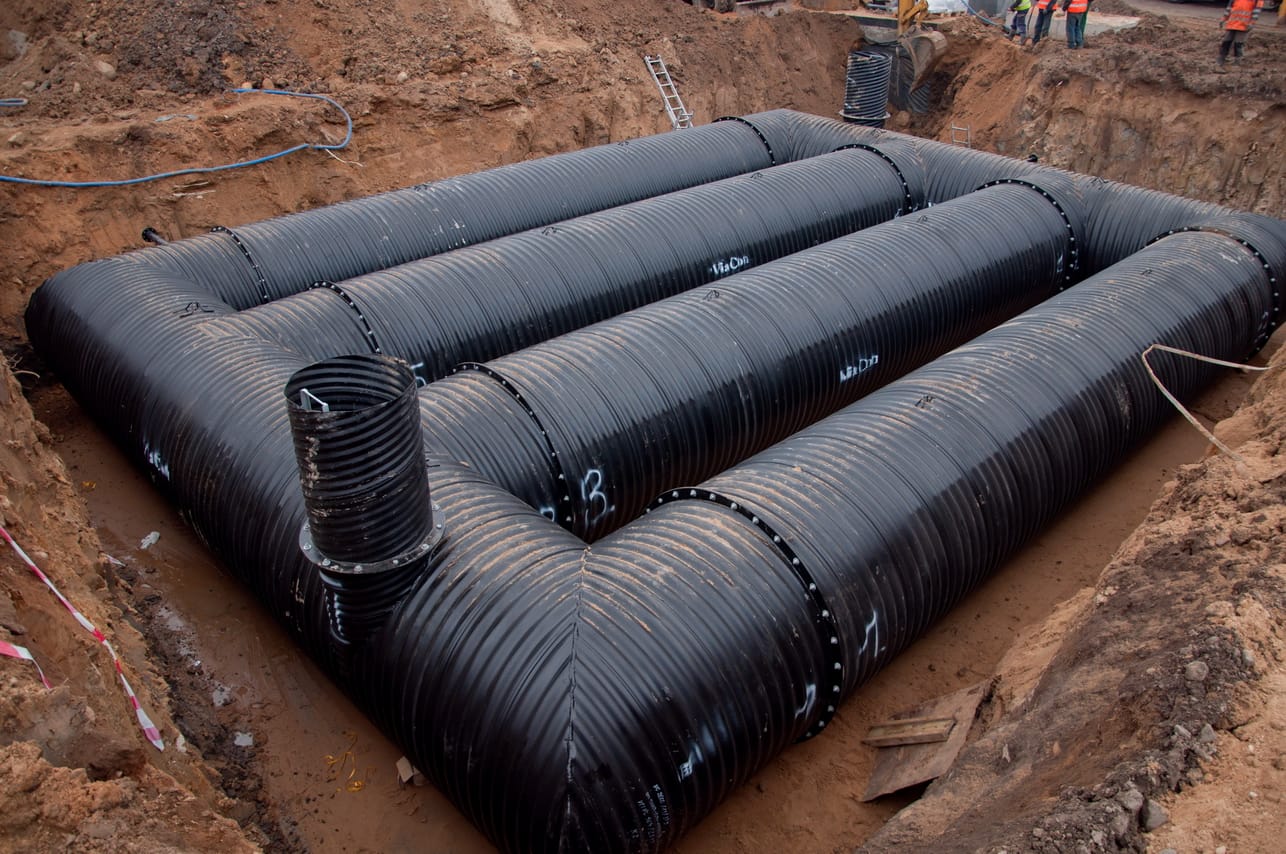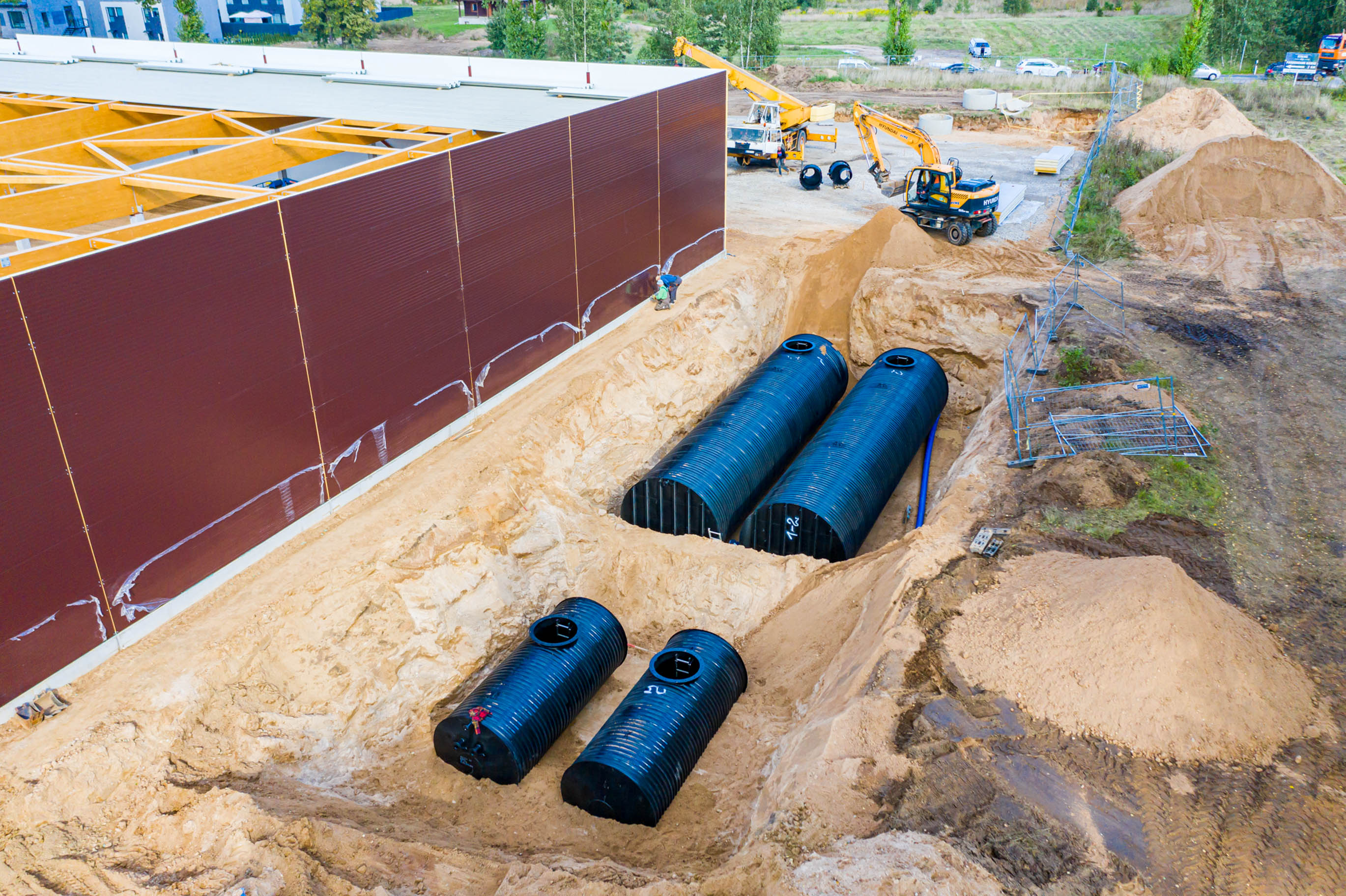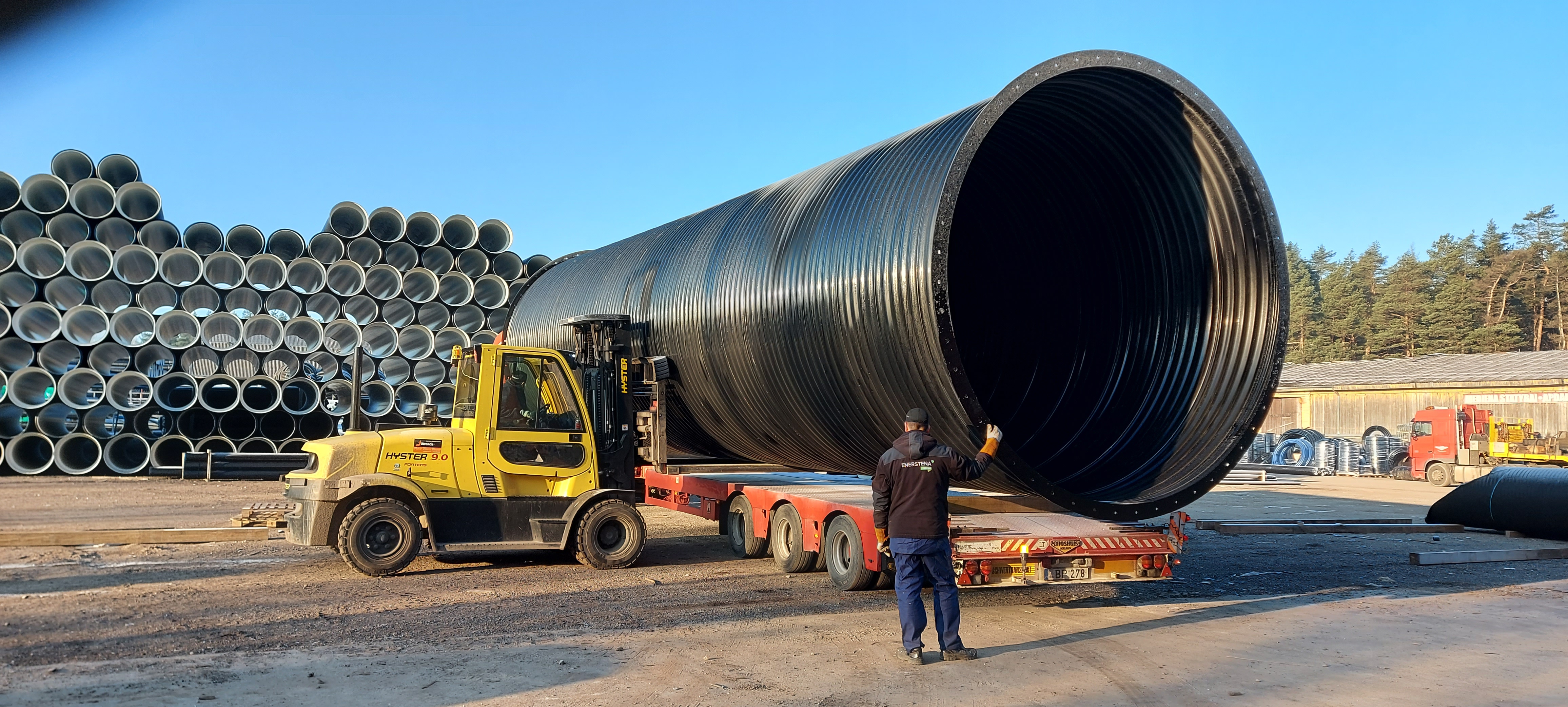Retention tanks are used to temporarily store large amounts of rainwater and discharge into an existing sewer network or natural environment.
Retention tanks are made of spiral corrugated pipes HelCor.
Stormwater tanks are a key component of stormwater management systems. These reservoirs play a crucial role in minimizing the risks of flooding, reducing the load on the sewage network,mitigating the effects of extended dry periods and promoting a more sustainable use of rainwater.

One of the most important areas of storm water management is the treatment of surface water from oil and sand particles. High-efficiency treatment plants protect the environment from dangerous pollution.
Our retention tanks are made from light, strong and reliable construction.
ViaCon can offer the retention tanks of various designs that can be adapted to different areas.
Our products are low weight hence easy to ship and install
Minimal equipment and labour requirements
Installation does not require additional material costs
It is not necessary to install a load distribution plate above the tanks
Thanks to our own production can we customise our products
By taking care of the water in the right way, it can be used again
Rainwater tanks have become a central component in sustainable water management and environmentally friendly construction technology. These tanks play a crucial role in collecting, separating, storing and using rainwater to minimize waste, protect the environment and contribute to a more sustainable future.
A rainwater tank is a container specially designed to collect and store precipitation, especially rainwater. This technology has grown in popularity as a reaction to increased awareness of water resources and environmental responsibility.
Rainwater tanks can be made of different materials, including plastic, concrete, steel or fiberglass, and are available in different sizes to suit different areas of use.


Have an idea or a project, lets collaborate and build some awesome stuff
A rainwater reservoir is a device used to temporarily store and manage large amounts of rainwater. It is designed to prevent flooding and erosion by slowing the runoff of stormwater and releasing it in a controlled manner.
The terms are often used synonymously, but a stormwater tank usually refers to a specific structure for storing water, such as a pipe reservoir, while a stormwater reservoir can be a broader term that includes various solutions for managing stormwater.
A stormwater reservoir works by collecting rainwater from an area and storing it temporarily. When the level in the reservoir reaches a certain limit, the water is released either into an existing sewage network, natural environment or used for irrigation. The water can also be used to reduce costs and increase sustainability in the built environment, such as for toilets or as process water for manufacturing.
Stormwater tanks help reduce the risk of pollution in waterways by removing pollutants from rainwater. They can also be used to also promote the reuse of water, which reduces the need to take from natural resources.
Stormwater pipes are used to transport stormwater from one location to another, while stormwater tanks are used to temporarily store and manage stormwater before it is discharged or used. If the volume in the stormwater pipes is increased at the same time as the flow is limited, a storage/storage function can also be achieved in stormwater pipes.
An irrigation tank is a special type of tank used to store water for irrigation of green areas, gardens and crops. The difference lies in the use, where an irrigation tank is primarily used for irrigation, while a stormwater tank handles stormwater from rain and runoff.
Yes, in some cases stormwater tanks can also be used for irrigation if the water has been purified and is suitable for the purpose. This can help save water resources.
Irrigation tanks are mainly used for green areas, agriculture, gardens, golf courses and crops. They are a critical component in ensuring access to water for cultivation and landscape irrigation.
The water in an irrigation tank should undergo appropriate treatment and filtration to ensure that it is free from impurities and suitable for irrigation. This may include particle separation and chemical treatment if necessary.
A rainwater tank is a container used to collect and store rainwater from the roof of buildings. The stored water can then be used for various purposes, including irrigation and other non-potable purposes.
The purpose of rainwater recycling is to use rainwater as an alternative source of water for non-drinking purposes, such as irrigation, toilet flushing and laundry. This reduces the pressure on the drinking water supply and helps conserve water resources.
A delay reservoir is a device used to temporarily store stormwater and gradually release it into the sewer network or natural waterways. The aim is to reduce the risk of flooding by delaying the flow of rainwater into the drainage system.
The benefits of using rainwater recycling systems include reduced use of potable water for non-potable purposes, cost savings and reduced strain on the water supply system.
Yes, in some cases a stormwater tank can be used to collect rainwater for recycling, provided the water is cleaned and treated as needed.
ViaCon constructs connections. Consciously.
We combine more than three decades of experience with today's cutting-edge technology and vital sustainable goals. ViaCon is a pioneer in the field of Bridges & Culverts-, GeoTechnical- and StormWater Solutions.
ViaCon AB
Box 2064
Vallgatan 21
SE-531 02 Lidköping, Sverige
Copyright 2021 © “ViaCon” Group, All rights reserved.
